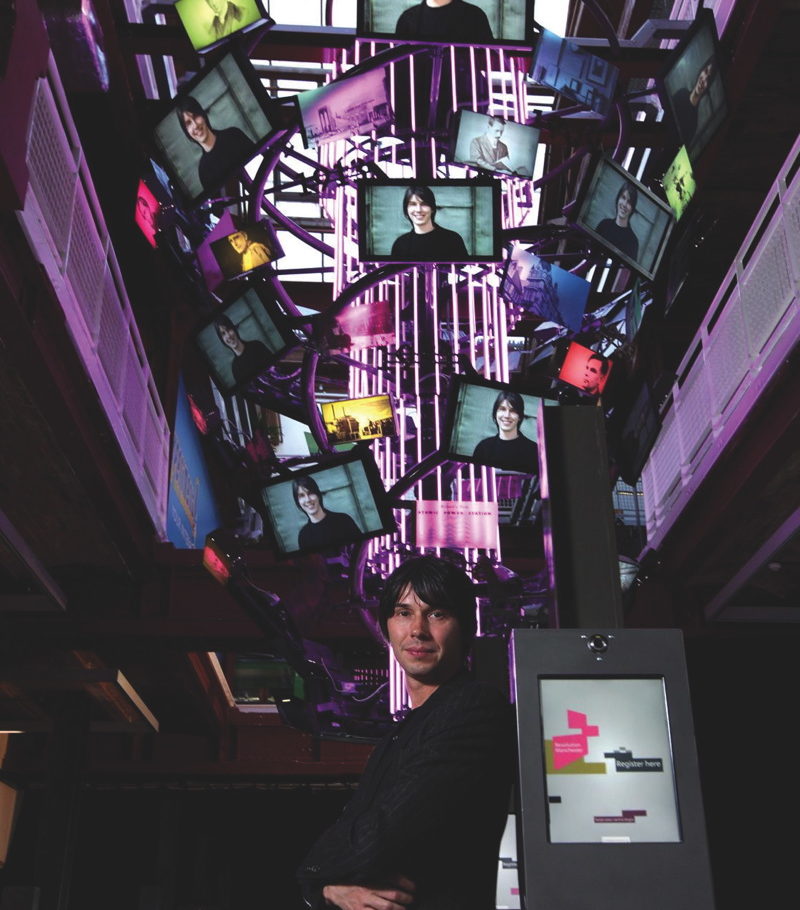MOSI looks to the future
Jo Nightingale on the Manchester museum's new centre for industrial heritage
Manchester’s Museum of Science and Industry (MOSI) has unveiled a new multi-million pound gallery, which it hopes will act as a hub for the region’s industrial heritage.
Revolution Manchester aims to bring key developments in the north west’s history to life, using the latest interactive technology, and showcase how Manchester and the north led the world in manufacturing, transport, energy, computing and communications.
The seven-month project is part of a £9 million redevelopment programme to improve the visitor experience at MOSI, with stairwells, lifts and access ramps relocated on the outside of the main warehouse to accommodate a new foyer, cafe, gift shop, learning space and conference suite. Revolution Manchester forms the new route into the museum and curator John Beckerson hopes it will orient visitors into the site’s exhibitions proper, as well as to other heritage venues across the region.
“This is a big museum and previously a lot of visitors didn’t know where to start or what they might find, so we wanted to capture MOSI’s essence in one place,” Beckerson said.
“The gallery operates on several levels depending on the time or level of interest you have, and points visitors outwards as well as inwards.”
As well as sign posting more specialised industrial sites like Bolton Steam Museum and Styal’s Quarry Bank Mill, the gallery goes some way to filling a perceived gap at the birthplace of the revolution. Despite its drive to become a world tourist destination, Manchester has never had a museum dedicated to its own history, and MOSI’s text-heavy Making of Manchester galleries, which pre-date the 1996 IRA bomb, were doing little to fill the hole.
Revolution Manchester uses the country’s biggest indoor LCD screen, interactive displays and key artefacts from MOSI’s collection to bring the pioneering past to life. Entering the gallery visitors are greeted by a 26-screen digital chandelier, displaying their photo alongside portraits of historical innovators – part of a barcode registration system allowing punters to capture data from the exhibits and interactives to view online when they get home.
“We wanted to create a dialogue, not a broadcast that stops when you leave,” said Kevin Palmer, director of designers, Kin. “MOSI has been criticised before for being really good at celebrating the industrial past but less so at embracing the future, so our remit was to come up with a more exciting, engaging and modern gallery.
“We didn’t want to alienate MOSI’s existing visitors but were keen to tell the stories of the past in new ways, especially for kids who might find it hard to relate to aspects of the industrial revolution. The area has an amazing history which is full of world firsts, from the industrial revolution to MediaCity, and we wanted to inspire kids into thinking they could be part of the next big thing.”
Apart from its special exhibitions MOSI is free to enter, so the Department for Culture Media and Sport’s recent announcement that it will remove its support (around 80 per cent of MOSI’s income) in 2014/15 has intensified pressure to generate revenue. Having already set up a fundraising department, however, the museum is positive about diversification, and has designed the new gallery to attract party-planners and corporate clients as well as a projected one million visitors a year.
“First and foremost this is a museum space, and the screen will run animations, visitor vox pops and pop-up exhibitions,” said Palmer. “But we were conscious that it be a revenue-generating space too, and the media wall will be an ideal canvas for all kinds of social and corporate events.”
For curator John Beckerson the impetus for the new gallery is a little more romantic. “We want to say: This is Manchester, this is the north west, and these are some of our achievements,” he said. “Past, present and future.”
Photo: science star Professor Brian Cox visits MOSI

Leave a reply
Your email address will not be published.